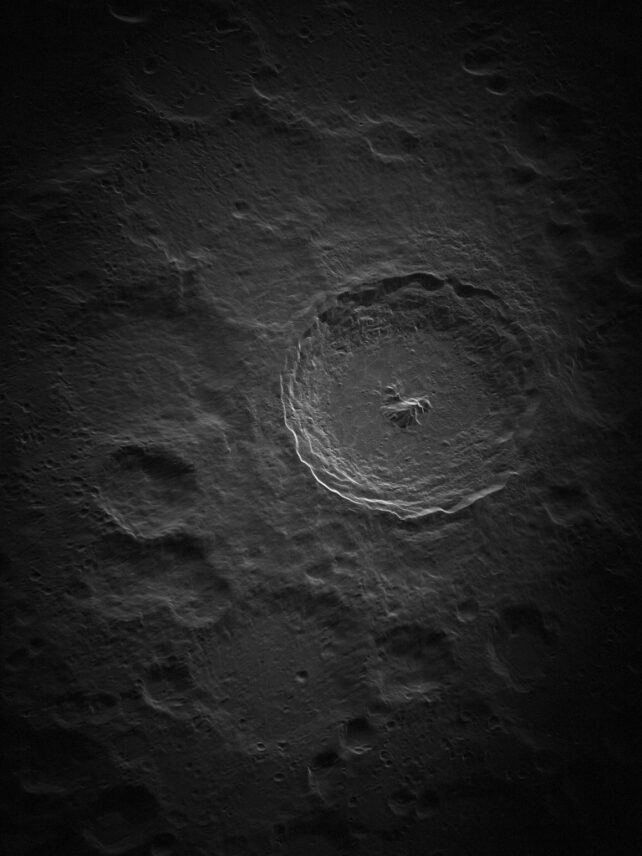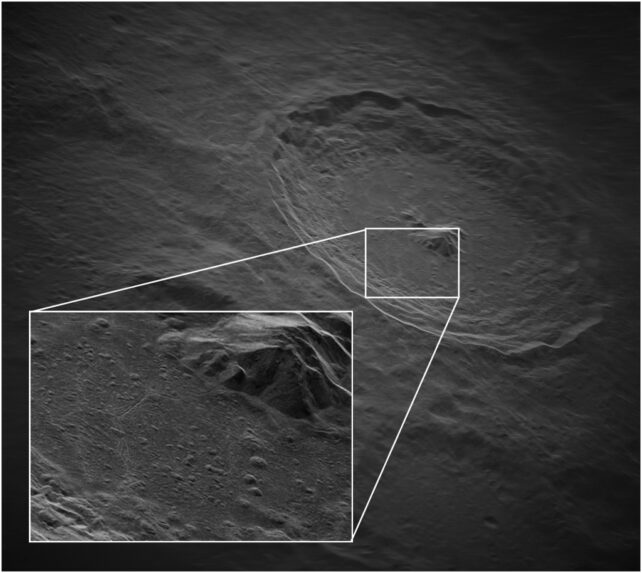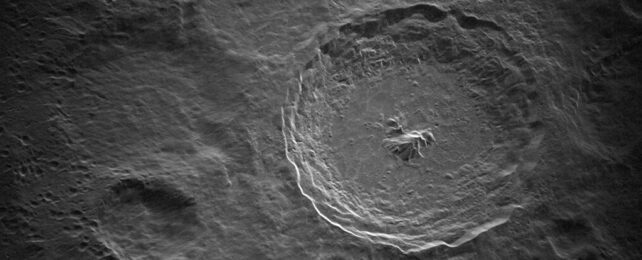Everyone loves taking pictures of the Moon. Whether it's with their phones or through the wonders of astrophotography, photographing the Moon reminds us about the wonders and awesomeness of the Universe.
But while we can take awesome images of the whole Moon from the Earth, it's extremely difficult to get close-up images of its surface given the enormous distance we are from our nearest celestial neighbor at 384,400 km (238,855 mi).
This is because the closer we try to zoom in on its surface, the blurrier, or more pixelated, the images become. Essentially, the resolution of the images becomes worse and worse.
But what if we could take high-resolution images of the Moon's surface from Earth instead of relying on satellites presently in lunar orbit to take them for us?
Taking high-resolution images from Earth is precisely what a collaborative team of scientists and engineers from the National Radio Astronomy Observatory (NRAO), Green Bank Observatory (GBO), and Raytheon Intelligence & Space (RIS) have set out to do with the National Science Foundation's Green Bank Telescope (GBT) and Very Long Baseline Array (VLBA).
Through their efforts, the GBT, which is currently the world's largest fully steerable radio telescope, could be home to a next-generation, high-power planetary radar system for scientists to use to study the planets, moons, and even asteroids within our very own Solar System.
The prototype radar consists of a low-power transmitter that was developed by RIS, tested using the GBT, and targeted at the lunar surface, with the radar signals bouncing back and being received by NRAO's ten 25-meter VLBA antennas.
What's most remarkable about the transmitter is it only produces up to 700 watts of power, which is less than a standard kitchen microwave of 800-1,000 watts, at 13.9 GHz.
The prototype radar was able to image Tycho Crater, which lies in the southern hemisphere of the Moon measuring approximately 85 kilometers in diameter, with 5-meter resolution revealing incredible details of the crater's floor.

"It's pretty amazing what we've been able to capture so far, using less power than a common household appliance," Patrick Taylor, who is the joint Radar Division Head for GBO and NRAO, said in a statement.
Taylor presented the findings from the prototype radar at the American Astronomical Society's 241st Conference in Seattle, Washington in January 2023 in a brief talk titled, "The Next Generation Planetary Radar on the Green Bank Telescope", where he displayed radar images of the lunar surface and other findings between 2020 and 2021, and can be seen in the first ten minutes of the video below.

Taylor described the Tycho Crater images in his talk as "…sort of linear or polygonal features on the crater floor, just showing that you could start doing geology with these images from the ground [Earth]". He also displayed a single radar image of the Apollo 15 landing site at an astounding 1.25-meter resolution, which he referred to as "the highest resolution image of the Moon ever taken from the ground."
For context, the Lunar Reconnaissance Orbiter Camera (LROC) onboard the Lunar Reconnaissance Orbiter (LRO) can take images of the Moon's surface up to 0.5-meter resolution, which means this prototype radar can take images of the Moon's surface from Earth almost as well as a satellite currently orbiting the Moon itself!
Along with the lunar images, the prototype radar also detected a "potentially hazardous" asteroid in 2021 known as (231937) 2001 FO32, which is labeled as "potentially hazardous" due to its size, approximately 1 kilometer in diameter, along with how close it can get to Earth, in this case just over 2 million kilometers away. The asteroid's detection appeared as a spike in their data.
"And, now it's not the same as the images of the Moon," Taylor said in his talk.
"But from that little spike, you can figure out how fast this object is moving, you can figure out its orbit, you can figure out its trajectory in the future, you can determine its impact risk, you can assess how much of a hazard it is, you can constrain its spin state, its size, its composition, its scattering properties, and so on.
"So, even though it doesn't look like much, that one little detection can tell you a lot of information about the characterization of the asteroid. So, the main takeaway from this, though, is that we were able to detect an asteroid five times further away than the Moon with less power than your microwave oven, which is pretty impressive."

Next steps include scaling up the radar up to 500 kilowatts, which is almost 1,000 times more powerful than that current prototype at 700 watts, and design work on this flagship system is ongoing using both the VLBA and the future Next Generation Very Large Array (ngVLA) as ground receivers.
This radar could also potentially detect objects in what's known as cislunar space, also known as high Earth orbit space, in hopes of protecting future lunar astronauts and spacecraft as we send humans back to the Moon in the coming years.
Along with its potential planetary defense capabilities, GBO's future radar system could also be used for planetary science purposes, including imaging, astrometry, and physical and dynamical characterizations of planetary objects within the Solar System, as well.
What exciting discoveries will GBO's new radar system uncover about our solar system in the coming years and decades? Only time will tell, and this is why we science!
As always, keep doing science & keep looking up!
This article was originally published by Universe Today. Read the original article.
